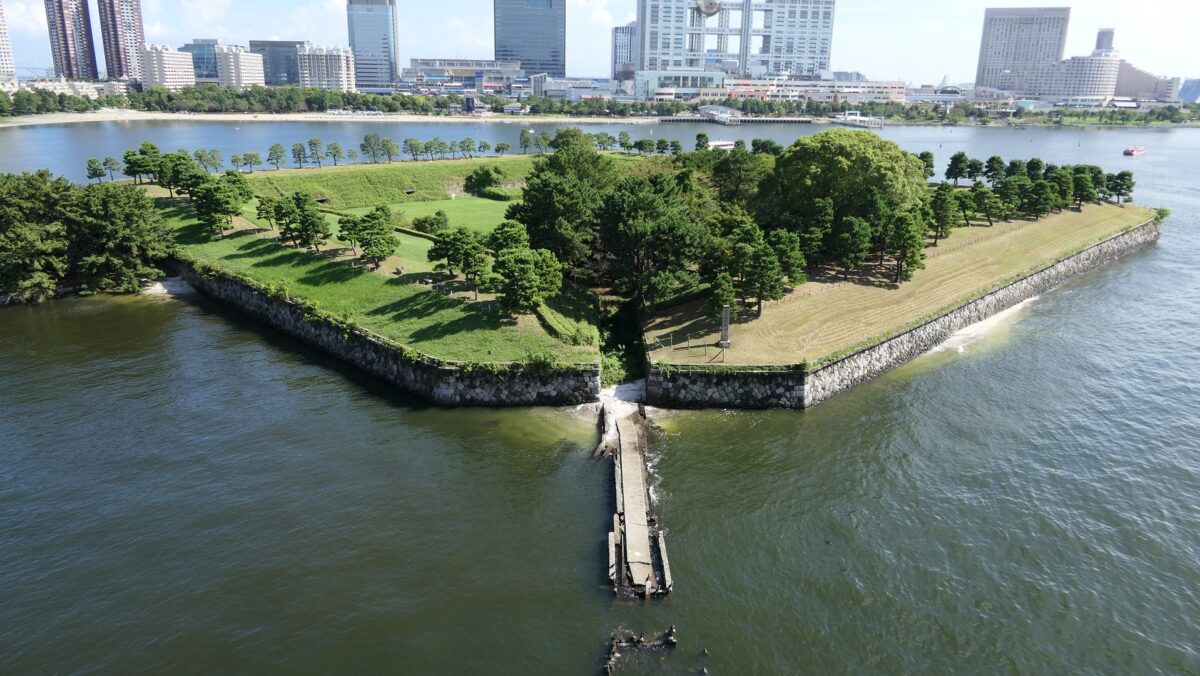Later History
The later lives of the Shinagawa batteries have been mixed.
The No.1 and 5 Batteries have been engulfed by landfills.
The No.2 and No.7 (which was left because of the canceled construction) have been removed due to the convenience of transportation.
The No.4 (same as No.7) was sold to the private sector before being used for the ground of a dock. The ground has finally become a redevelopmental area of the waterfront, called Tennoz Isle. The remaining stone walls of the No.4 Battery can be seen as the base of its boardwalk.
The No.3 and No.6 are the last remaining historical sites. They were designated as a National Historic Site in 1926 and the No.3 Battery was opened as the Daiba Park in 1928.

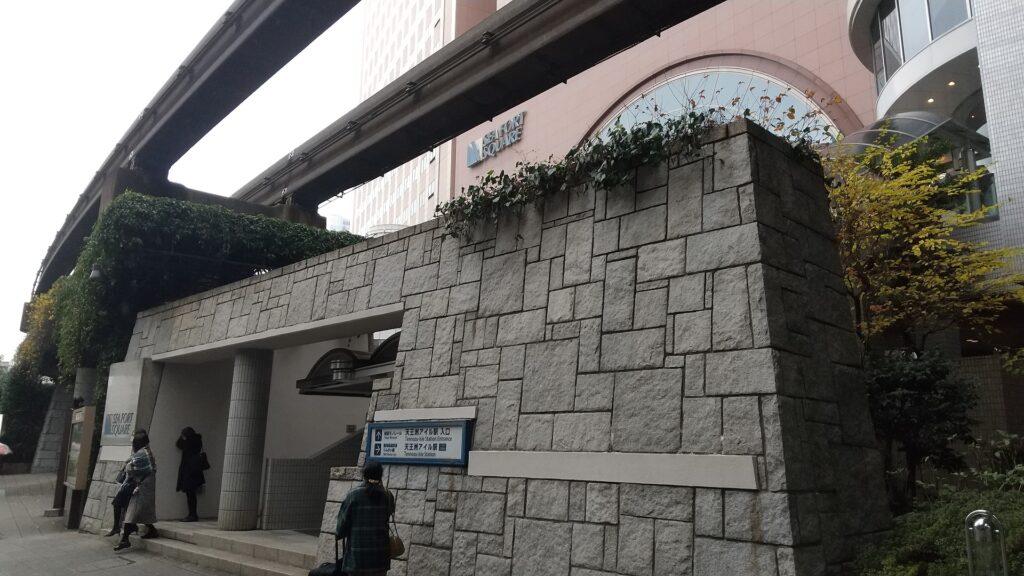
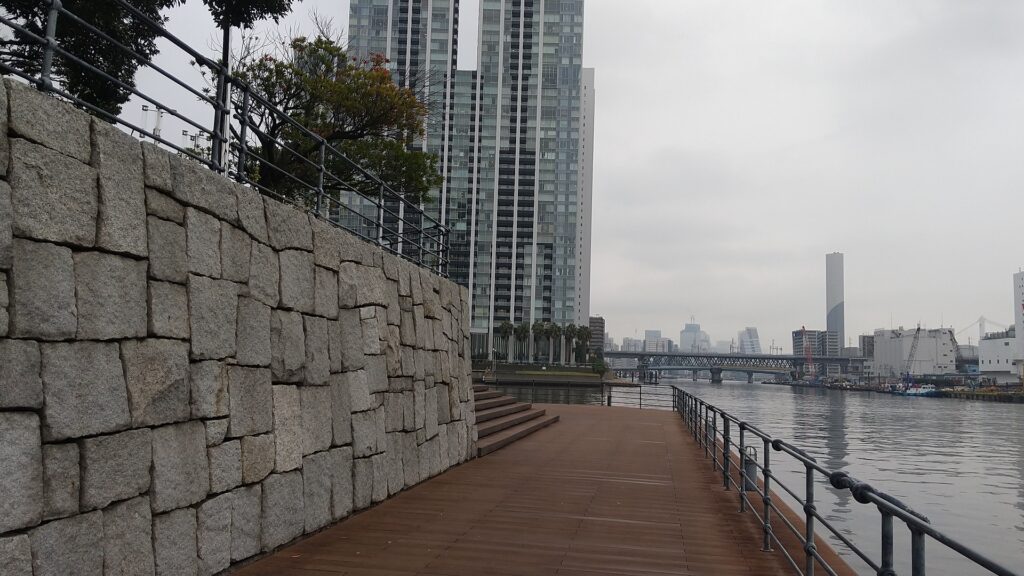
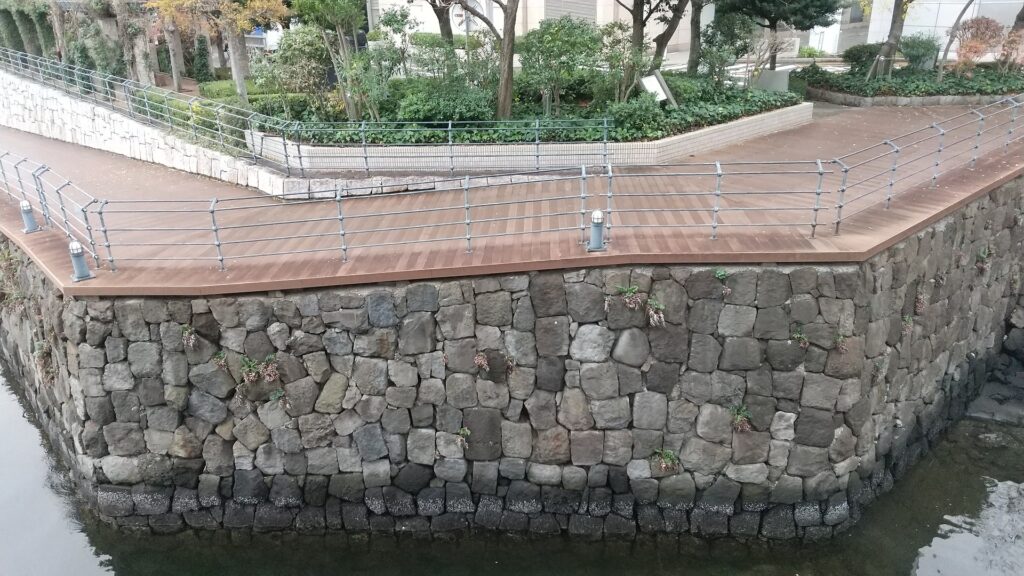
How to get There
Currently, there are two remaining batteries, No.3 and No.6 out of the five completed ones as mentioned above. In addition, only the ruins of the No.3 Battery are open to the public as a park. If you want to visit the No.3 battery ruins, which has now become Daiba Park, it takes about 10 minutes on foot from Odaibakaihinkoen Station on the Yurikamome line.
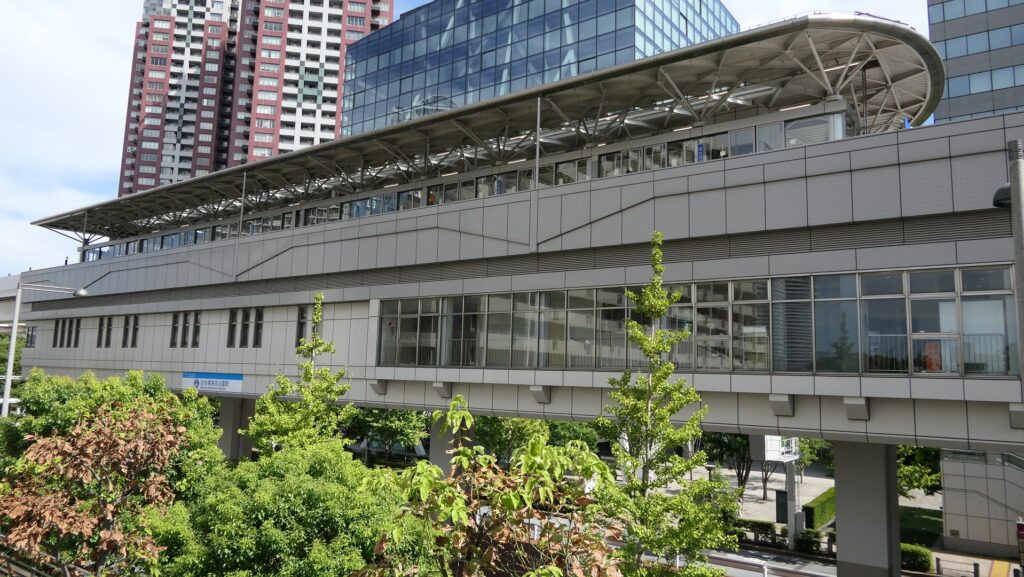
Walking from Tamachi Station
However, in order to look over the whole view of the two ruins (No.3 and No.6), try this route.
Get out of the train at Tamachi station on the JR Yamanote Line. Exit from the east entrance of the station. Go along Nagisa street for the time being. You can see the Rainbow Bridge which has promenades on both sides (north and south).
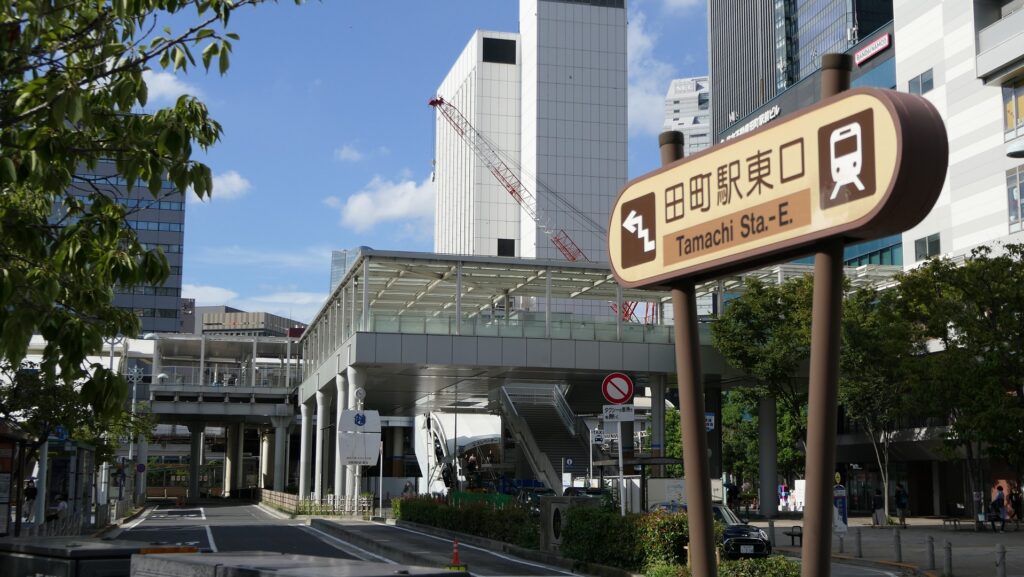
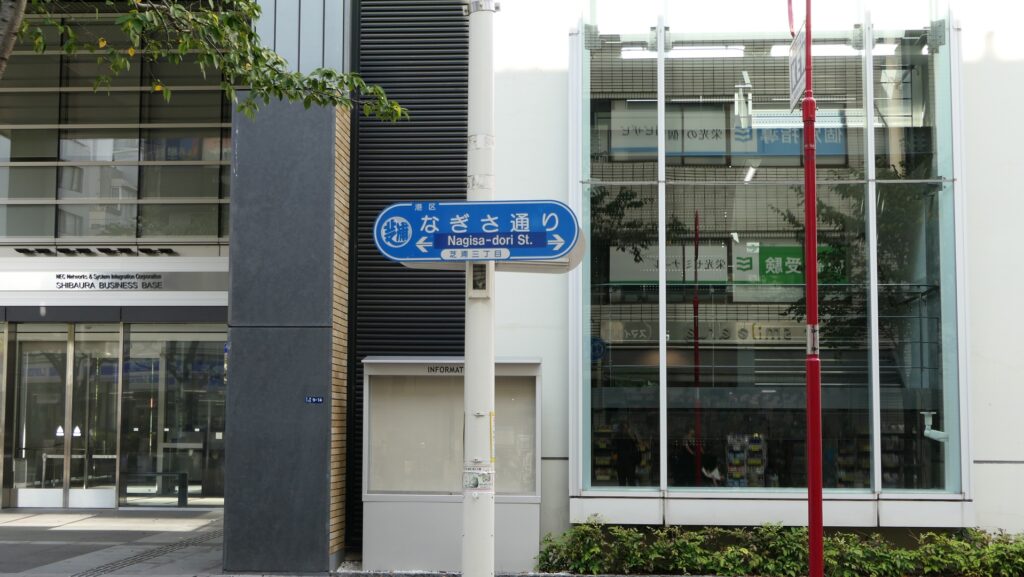


Get in the Shibaura entrance of the bridge and go up using the elevator. Select the south route to see the ruins to the south. If you go straight through the promenade, you will first see the whole view of the No.6 Battery.

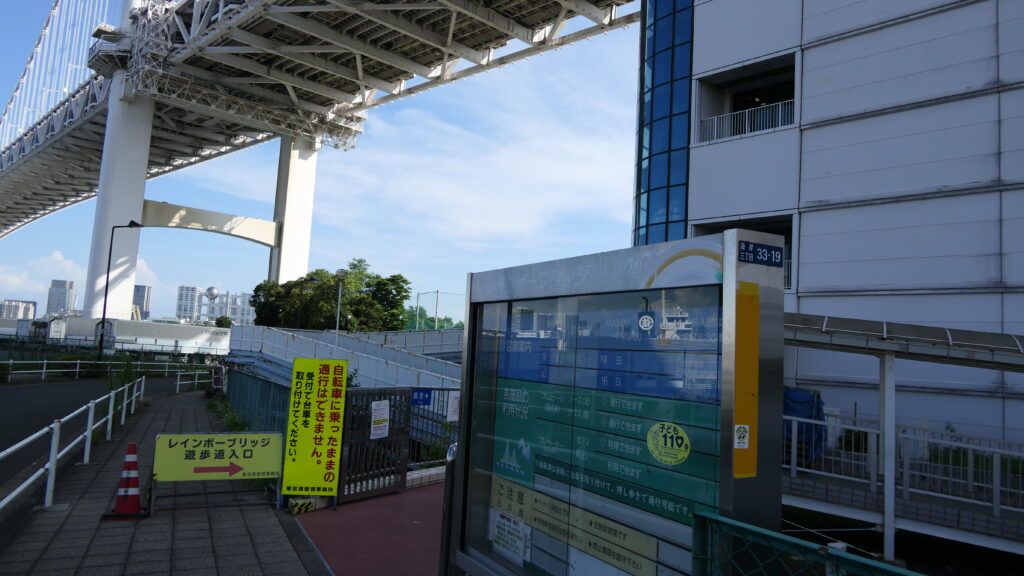
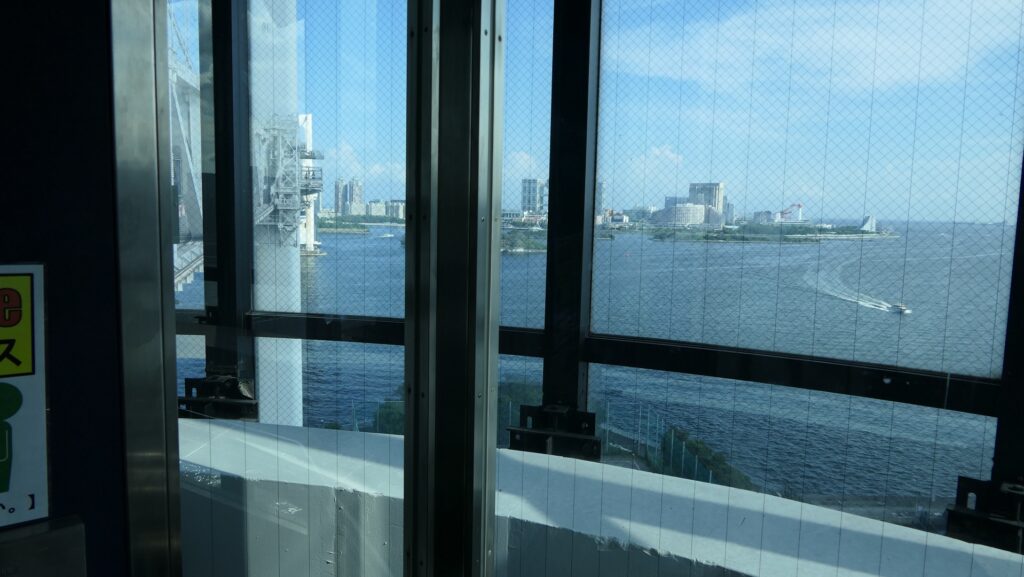

No.6 Battery like Birds’ Paradise
The battery is still isolated in the Tokyo Bay, being left as it has been to keep its original condition as much as possible though the canons and relative facilities were already removed. That’s why it looks as if it was during the first sight. However, if you look at it carefully, it is all covered with trees with uncountable number of birds gathering. According to a historian who visited it with permission from the government, it smells very bad and some structures collapsed naturally. It might have just become the birds’ paradise, so we may need to re-consider how to preserve it.
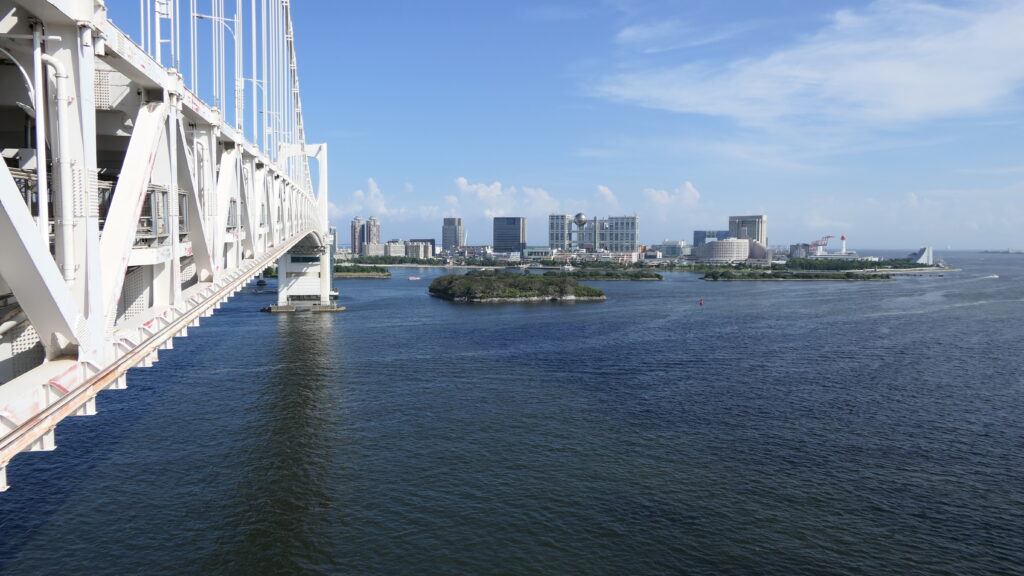


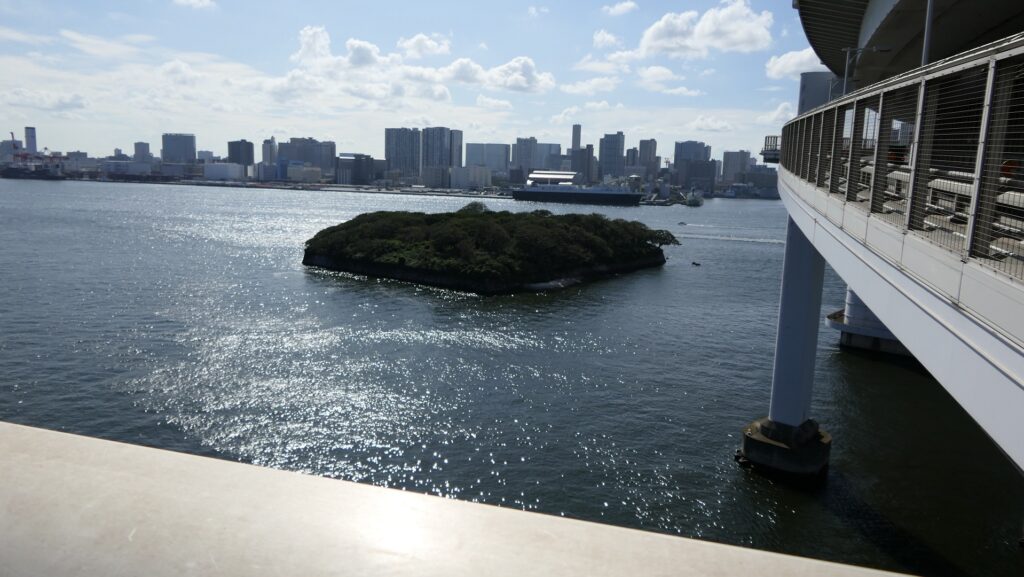
Great View of No.3 Battery
When the promenade goes down with moderate slope, you will be near the park and the view of the No.3 Battery is becoming bigger and bigger. At this point, you will be facing the pier of the battery, it is the biggest one and extremely amazing! It is really a bird’s eye view. It also looks very much better than the No.6 in my opinion. The battery is basically a flat structure to avoid being targeted from enemies’ guns and cannons, so visitors can not easily recognize its whole view. That’s why I recommend seeing the bird’s eye view before or after your visitation.

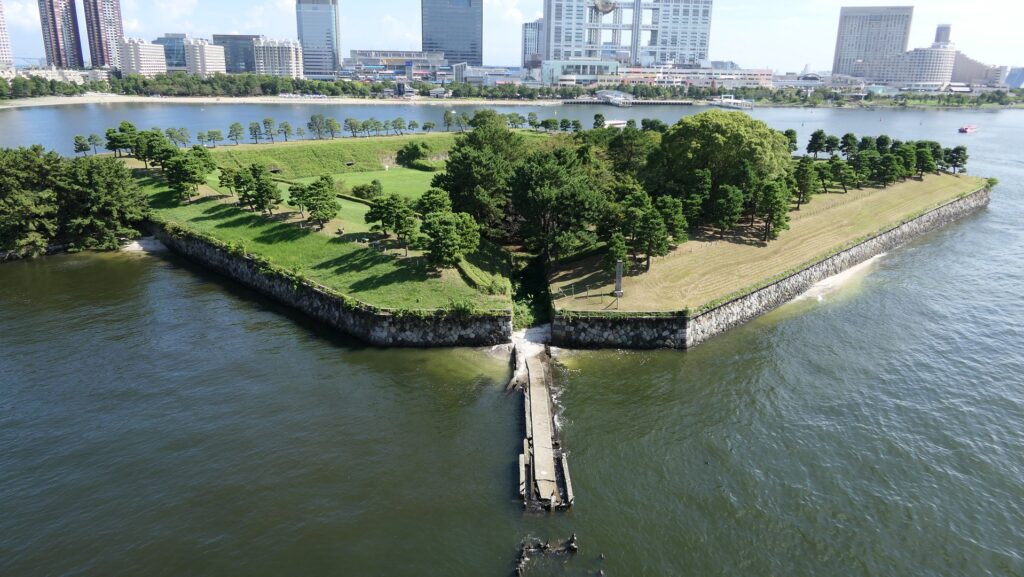
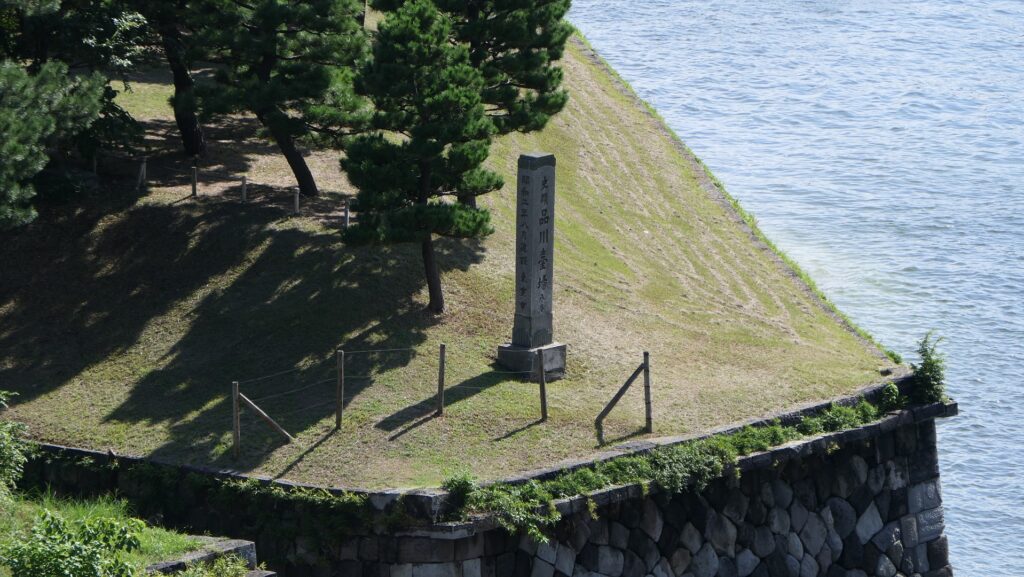
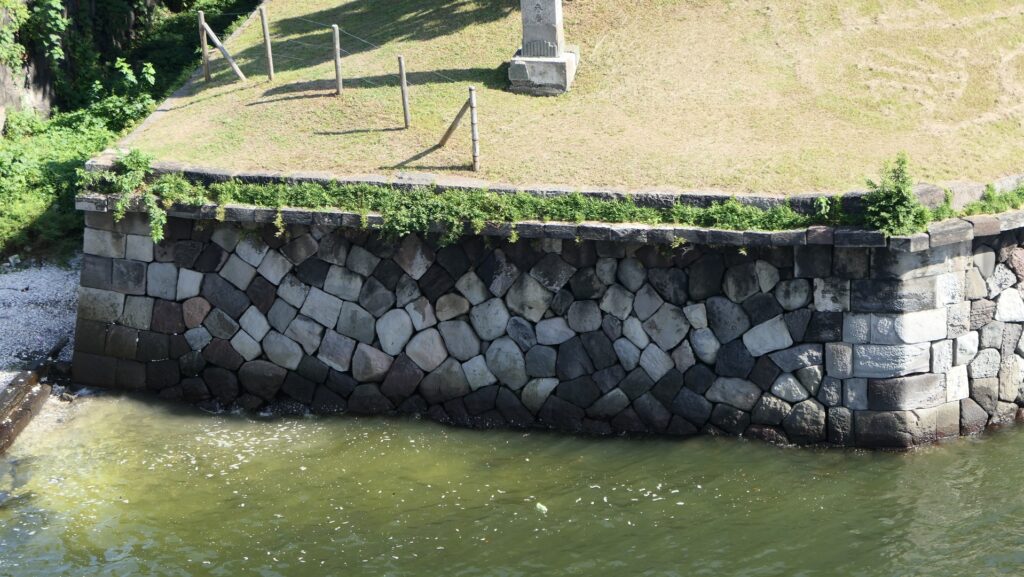
To be continued in “Shinagawa Batteries Part3”
Back to “Shinagawa Batteries Part1”

